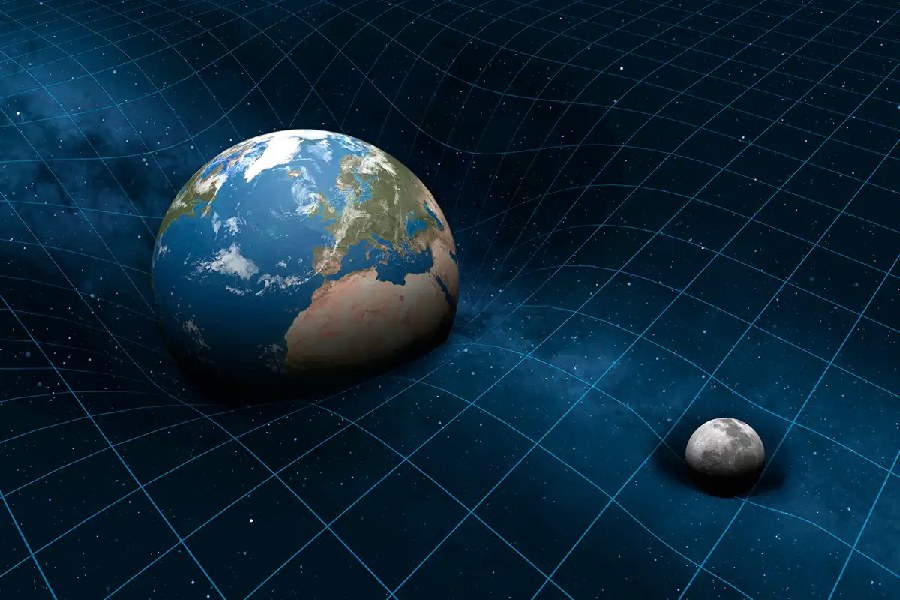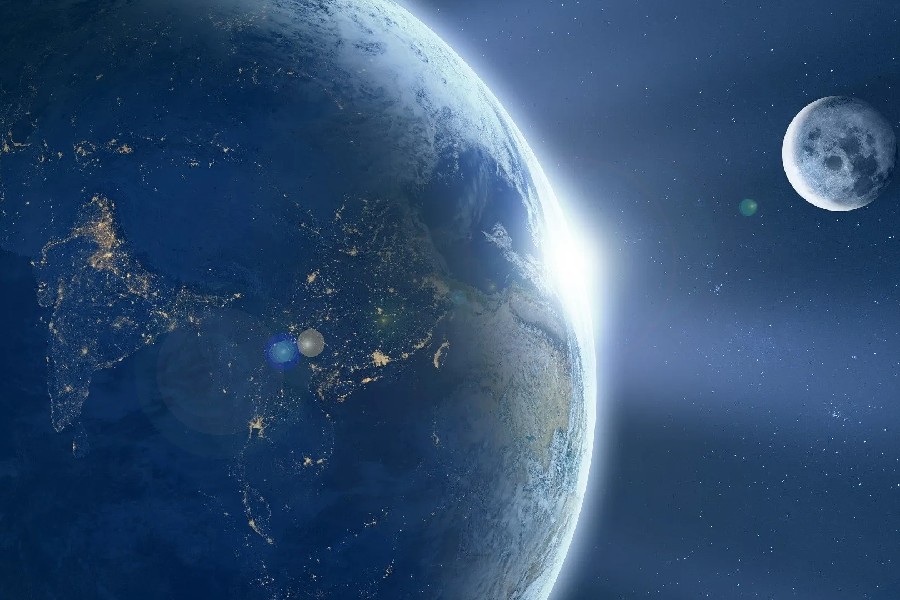All human movements happen on Earth’s surface, from a baby’s first steps to dancing under the moon. Yet an invisible influence called gravity anchors people instead of letting them float.
What causes this mysterious grounding force? Let’s explore from the scale of stars down to tiny particles to understand why does Earth have gravity. Earth’s gravity feels gentle, yet its power is infinitely vast.
Gravity is a force that attracts objects toward each other and holds us on Earth’s surface. But what causes this mysterious pull? This article explores gravity from the cosmic scale down to the quantum realm. Get ready for some intense concepts even great thinkers have struggled to fully explain.
Gravity, which holds us to the ground, has confounded thinkers for centuries. Einstein advanced understanding, but gaps remain between relativity and quantum theory. Exploring gravity’s origins, from cosmic to quantum scales, renews appreciation for the gentle, powerful pull of the ground below.
As we embark on this mental journey through the universe, may a spirit of imagination and inquiry guide us. Solving gravity’s riddles will profoundly deepen appreciation for the ground below our feet.

Why Does Earth Have Gravity?
Why does Earth have gravity? Earth has gravity because of its mass. Gravity is a force that pulls things toward each other. The strength of this force depends on the mass of the objects and the distance between them. Earth is quite massive, so it has a strong gravitational pull.
The more massive an object, the stronger its gravitational pull. Earth’s gravity is what keeps everything anchored to its surface, including the atmosphere, oceans, and living organisms. The strength of gravity on Earth is approximately 32 feet per second squared or 32 ft/s² (9.8 m/s²) near its surface.
This gravitational force is responsible for the weight of objects and plays a crucial role in shaping the dynamics of our planet.
Gravitons are hypothetical particles proposed in some quantum gravity theories, acting as the quantum force carriers mediating gravitational interactions. This hypothesis aims to provide a unified description of all fundamental forces in the universe by incorporating gravity into the quantum realm.
Earth’s Gravity: Explanation and Characteristics
Earth’s gravity field
Earth has a gravitational field that pulls objects towards its center, the strength of this field is tied to Earth’s mass. All objects fall in this field with an acceleration of 32 ft/s² near sea level.
This acceleration due to gravity has been measured and calculated precisely through experiments. It decreases slightly as one moves farther from sea level due to changing distance from Earth’s core. But it remains measurable across the globe.
Factors determining gravity
Two key factors set the strength of gravity – the universal gravitational constant and Earth’s mass. The gravitational constant is 6.67 x 10⁻¹¹ Newtons kg⁻² m², and Earth has 5.972 × 10²⁴ kilograms of mass.
These fundamentals interact through physics equations to create the planet’s gravity and related effects. Additional minor factors like rotation and tides also tweak gravity’s influence to a small degree across different Earth locations.
Calculating gravity acceleration
Equations use gravity constants and Earth’s properties to figure out its surface gravity acceleration. This means putting in the gravity constant factor, Earth’s mass, its radius, and height from the ground.
Plugging the numbers into the formula derives acceleration from gravity as 32 ft/s² at sea level. Slight adjustments account for altitude, latitude and local geology to fine-tune gravity acceleration measurements across the globe.
Gravitational Pull and Its Effects on Objects
Gravity, weight, and mass
Gravity accelerates objects downward, and the force this acceleration causes equals an object’s weight. Weight changes with gravity, but mass stays fixed. Like on the Moon with lower gravity, things seem lighter, but their inherent mass is the same.
Objects with more mass feel gravity’s pull more strongly. Earth has a large mass, so its gravity is very strong. We see gravity’s effects across many scales – from falling apples on Earth’s surface to satellites orbiting in space to galaxies aligning on the cosmic scale.
Even collisions between massive objects far away can create ripples in spacetime called ‘gravity waves’ that are detectable here on Earth. The larger an object’s mass, the stronger the gravitational effects it produces across multiple scales in the universe.
Observing and demonstrating gravity
We directly observe Earth’s gravity by how objects fall straight down. Pendulum swing and compasses align in consistent ways, also demonstrating gravity’s effects. Galileo’s classic experiments rolling balls down inclined planes revealed insights about gravity.
Gravity demonstrations use weights, springs, and disks to showcase gravitational force through principles like inertia. Seeing gravity’s tangible effects in action helps us understand this invisible phenomenon. These experiments and demonstrations make gravity’s mysterious influence more visible and comprehensible.

Factors Influencing Earth’s Gravity
Earth’s mass and density
The bigger the Earth’s mass, the stronger its gravity pull. Earth’s total mass creates gravity accelerating at 32 ft/s². Higher density packing also intensifies gravity effects, and Earth’s core is over 10 times denser than the surface crust.
So deep interior regions significantly drive Earth’s overall gravity field. The core’s immense density comes from heavy iron and nickel elements. Lower-density continental rock floats above, enabling surface habitability apart from intense inner layer gravity.
Earth’s size and gravity
The larger a planet’s radius, the stronger its gravity needs to be to hold itself together as a sphere. For example, Earth has enough gravity to keep itself spherical with its current radius.
If Earth’s radius was larger, the increased distance would make gravity weaker at the outer edges. Then, other forces like rotation or pressure could distort the shape.
So if Earth’s radius increased but its mass stayed the same, its gravity might not be strong enough to overcome forces trying to break the sphere apart. Gravity strength needs to scale up along with the planet’s size to maintain a spherical shape.
Density variations and gravity differences
Since higher density amplifies gravity, areas of Earth with denser subsurface geology exhibit heightened gravity acceleration. Contrasts in crust-mantle density cause gravity variation between low-lying ocean basins and towering mountains too.
Precision gravity maps reveal Earth’s inner density structure through this landscape-tied gravitational smoothing. Gravity scans help locate oil, mineral deposits, and faults by tracing density shifts tied to lower and higher gravity markings.
Altitude and Distance From Earth’s Center
Gravity changes by height
As you go higher above sea level, gravity acceleration gets weaker. This is because you’re farther away from Earth’s very dense core that contains most of its mass. For every 2200 meters up, gravity force drops about 0.7%. So the gravitational pull becomes weaker as you climb mountains or go higher up in the atmosphere.
Distance impacts gravity strength
Gravity is stronger closer to the center of a planet. Gravity’s pull is most powerful near the dense core containing concentrated mass. Farther away, interactions with the distributed mantle and crust are weaker.
This center versus surface difference is clear when comparing gravity at Earth’s peak versus the deepest mine shaft. Satellites in orbit have to reach extreme altitudes where gravity’s hold is nearly zero, allowing perpetual freefall around Earth. The precise orbital altitudes and physics that balance gravity fascinate space scientists.
Relation of Gravity to Earth’s Structure
Earth composition and gravity
Earth’s layers have different densities tied to composition. The metallic core is extremely dense from iron and nickel. Silicate minerals make the thick mantle lighter. The crust is least dense with lighter elements like silicon, oxygen, and aluminum.
Higher density means more mass crammed into a volume, creating stronger gravity acceleration. So the ultra-compact core’s density disproportionately generates Earth’s overall gravity field even though the core is a small fraction of the total volume.
Gravity effects on layers
The core’s gravity squeeze keeps Earth rounded. It pulls the settling crust into wrinkling plates. Contrasting densities between oceanic and continental crust cause additional gravity differences that aid plate motions.
Gravity slides the plates on the flowing mantle below, creating friction and drag, leading to earthquakes and volcanic eruptions at plate boundaries.
Influence on tectonics and geology
Gravity drives major gradual geological changes on Earth over long periods of time. Its pull flattens out land by erosion while gravity spreading the heavier ocean crust pushes seafloors lower. Density differences create mantle convection currents from hot upwellings that gravity makes into tall volcanoes when magma emerges.
In tectonics, gravity moves plates that crack the ground, causing earthquakes and volcanoes. Over long times, isostasy uses gravity to lift lowered crust back up. Gravity wears down tall mountains but also lifts up eroded valleys. This gradual balancing act slowly reshapes Earth’s surface.
So Earth’s gravity drives most of the cycles that constantly reshape and renew the planet over ages as mountains and eras come and go. Gravity acts through hidden shifts deep down that lead to visible changes on the surface above. In both fast cracks and slow uplifts, gravity sculpts the ever-changing face of Earth.
Conclusion
In this exploration, we have learned facts about the nature of gravity and how it enables Earth to keep everything together. Uncovering why does Earth have gravity helps us appreciate the invisible forces keeping us rooted to Earth.
We followed gravity’s trail from cosmic clouds to accreting matter that over eons condensed into the planet hosting us today. We discovered gravity arises on spheres massive enough that self-attraction overcomes fragmenting explosions.
Earth’s layers reveal gravity’s fingerprints – compressing the core, sliding plates, driving cycles endlessly regenerating worlds. Understanding gravity’s planetary origins and role allows apprehending its deeper gifts – not binding shackles but nourishing embrace.
Gravity sculpted and stabilized Earth’s foundation through four billion years of change to support fleeting life. May insights into its ever-shaping work seed further awe at our fortunate cradle for gravity’s lock secures the possibility of open vistas ahead still beyond grasp.
